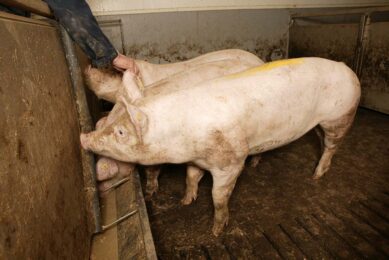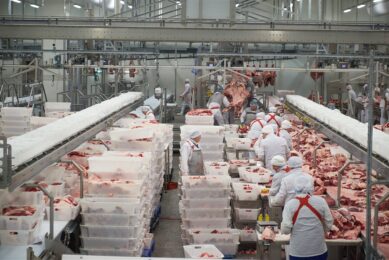Sharp increase of Australian pork imports
Australian imports of processed pigmeat have risen sharply by 40% in the last twelve months, originating mainly from Denmark, Canada and the US.
A report by ITS Global, “Australian Pork and Safeguards: An Industry in Crisis” stated that imports now account for 64% of the local processed pork market, and threaten to completely dominate the Australian pork market.
The industry body, Australian Pork, has called on the new Federal Labour Government to introduce safeguard provisions that restrict trade for 12 months while the Australian pig industry undergoes structural adjustment.
Safeguard provisions
In an interview, Khalil Hegerty of ITS Global said, “These safeguard provisions are legal under World Trade Organization (WTO). The Productivity Commission constituted by the outgoing coalition government had the power to recommend the implementation of safeguards, because WTO rules require that import safeguards have to be part of a public review.
“It would rest with the new minister responsible for agriculture to adopt them. If import growth continues at this rate, it threatens to capture the whole processed market within one and two years.”
Liberalised
The Australian pig industry was liberalised in 1994 following the Uruguay round of the WTO, but initially imports were negligible. Since then however, figures from Australian Pork show domestic consumption has risen by one third to 486,000 tonnes since 2002, while imports have risen by 126% and the rate is accelerating, jeopardising the future of the A$ 2 billion (€1.2 billion) Australian pig industry.
The report found imports had reduced prices in the Australian pigmeat market to such an extent that local producers who are also facing record high feedgrain prices, are now losing A$ 0.55/kg (€0.33/kg), or about A$ 40/pig (€24/kg), and estimated that the industry is losing about A$ 182 million a year.
Decimated
Commenting on the report, Kathleen Plowman of Australian Pork said, “The industry had literally been deciminated, the sow herd was down 30,000 to 300,000. Pig farmers had invested heavily in modern specialised piggeries, which if not used for pigs are virtually worthless.
“The industry had already experienced the first wave of closures, and a recent survey found nearly 30% of pig producers were planning to leave the business. And once a pig farmer stops production, it is not possible to put the facilities in mothballs and re-enter the industry when things are looking better.
“It is a dismal, heart-breaking story. Either the government finds some way of supporting Australian pig producers, or the industry will surely be destroyed and thousands of jobs lost!”
Related websites:
• Australian Pork Limited
• World Trade Organization
• ITS Global
For the latest pig news, subscribe here
Join 18,000+ subscribers
Subscribe to our newsletter to stay updated about all the need-to-know content in the pigsector, three times a week. Beheer
Beheer










 WP Admin
WP Admin  Bewerk bericht
Bewerk bericht